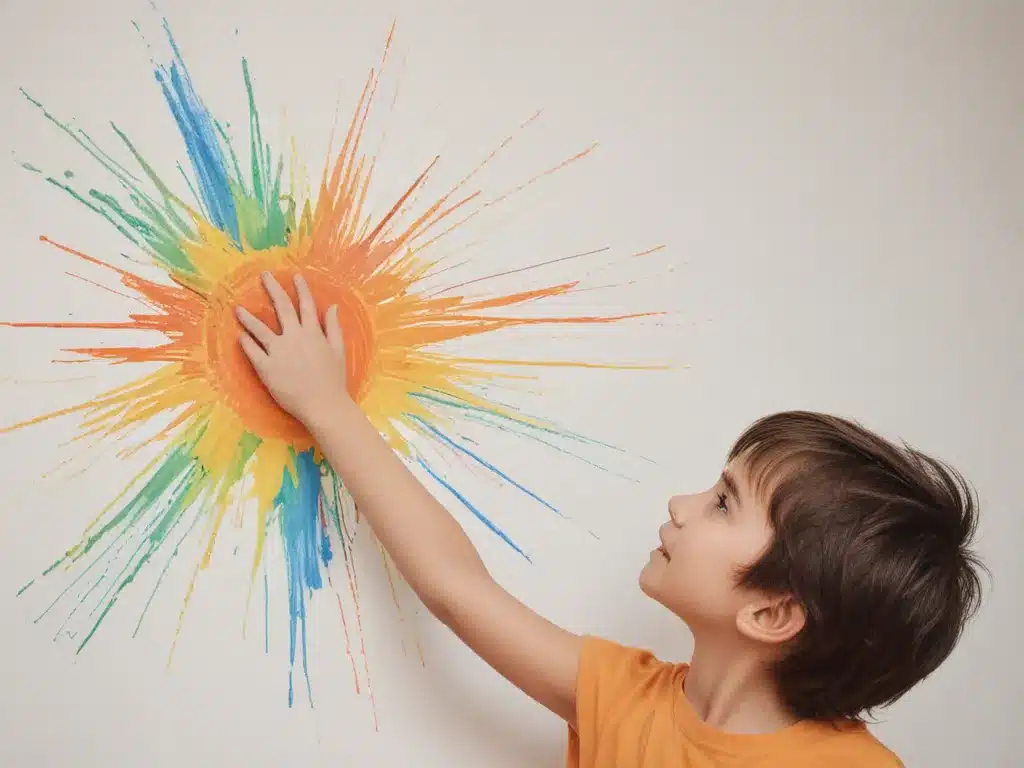Introduction
Crayon marks on walls are a common problem for parents of young children. While crayons are a fun and creative toy, they can leave frustrating stains on painted walls that are difficult to remove. Thankfully, there are several methods you can try to get crayon off of walls without repainting. Here are my top tips for removing crayon marks from walls.
Prepare the Area
Before attempting to remove crayon, prepare the area to make the process easier:
-
Clear furniture or other items away from the wall to allow full access.
-
Vacuum the wall to remove any loose crayon dust or debris.
-
Lightly rub the mark with a dry cloth to remove any excess crayon on the surface.
Try Non-Damaging Methods First
Start with gentle cleaning methods before moving on to more abrasive options:
Use a Mr. Clean Magic Eraser
-
Wet a Mr. Clean Magic Eraser and gently rub the crayon mark. The eraser’s micro-scrubbers help lift the wax away without damaging paint.
-
Re-wet the eraser as needed and change to a clean side once one area gets dirty.
-
This usually works for minor crayon marks.
Apply Baking Soda
-
Make a paste with baking soda and water and spread over the crayon mark.
-
Let it sit for several minutes to allow the baking soda to draw out the wax.
-
Wipe away with a clean cloth. Baking soda is non-abrasive.
Use Toothpaste
-
Squeeze a small amount of regular white toothpaste over the crayon stain.
-
Gently rub the toothpaste into the mark with a soft cloth or old toothbrush.
-
Rinse with warm water and dry the wall. The toothpaste acts as a mild abrasive.
Use Chemical Cleaners
For stubborn stains that remain, use chemical cleaning solutions specifically designed for wax:
Apply Goo Gone
-
Put a small amount of Goo Gone directly onto the crayon mark.
-
Let it soak in for 2-3 minutes. This allows the citrus-based cleaner to break down the wax.
-
Wipe away the excess.
-
Rinse with water since Goo Gone leaves behind a sticky residue.
Use WD-40
-
Similarly, spray a small amount of WD-40 onto a clean cloth.
-
Gently rub the WD-40 over the crayon mark to dissolve it.
-
Wipe clean with water to remove WD-40 residue.
Rub with Rubbing Alcohol
-
Pour some 70% isopropyl alcohol onto a soft cloth.
-
Rub gently over the crayon stain. The alcohol breaks down wax.
-
Rinse with water and wipe dry when finished.
Gently Scrape for Heavy Crayon Marks
If you are still battling a tough, heavy crayon mark, very gently scrape it before repainting:
Use a PlasticScraper
-
A plastic scraper, available at hardware stores, can help lift off layers of built-up crayon.
-
Work slowly and gently to avoid damaging the drywall underneath the paint.
-
Take your time and continually wipe away any wax residue with a soft cloth.
Apply Heat with a Hair Dryer
-
Use a blow dryer on a low setting to gently heat and soften the crayon.
-
Immediately use a plastic scraper to lift the softened wax off the wall.
-
Heat softens the wax bonds so it can be removed. But be very careful not to overheat any one area.
Repaint Severely Stained Areas
For walls that are severely stained that cleaning methods cannot fully remove, carefully repainting the affected areas is likely your best option for a pristine look:
-
Use a small paintbrush and trim along the edges of the stain to minimize how much paint is needed.
-
Apply a primer first if the crayon soaked deep into the paint and drywall. This will block any remaining wax.
-
Use satin or semi-gloss paint for washability. Matte paint will highlight any remaining marks.
-
Blend and feather out the paint edges to make the repainted spot less noticeable.
Prevent Future Crayon on Walls
While removing crayon can be tedious, you can take proactive steps to prevent new crayon marks in the future:
-
Cover up walls prone to crayon marks with wall decals or artwork
-
Redirect little artists to large sheets of paper taped on the walls or set up at a table
-
Limit crayon time to contained areas like high chair trays
-
Supervise playtime with crayons and remind kids that walls are not for coloring
-
Pick washable crayon options labeled non-toxic
-
Use crayon-friendly surfaces like chalkboard painted walls, easels, or window clings
With some luck and the right techniques, you can get your walls crayon-free again. But an ounce of prevention is worth a pound of cure when it comes to little kid art projects on your home’s walls!







